Patient Story 23 February 2024
From the Heart: Mark Mader
Written by Breann May
Mark Mader was not on the list to have a heart attack. One helicopter ride and two stents later, he thanks Ivinson for saving his life.
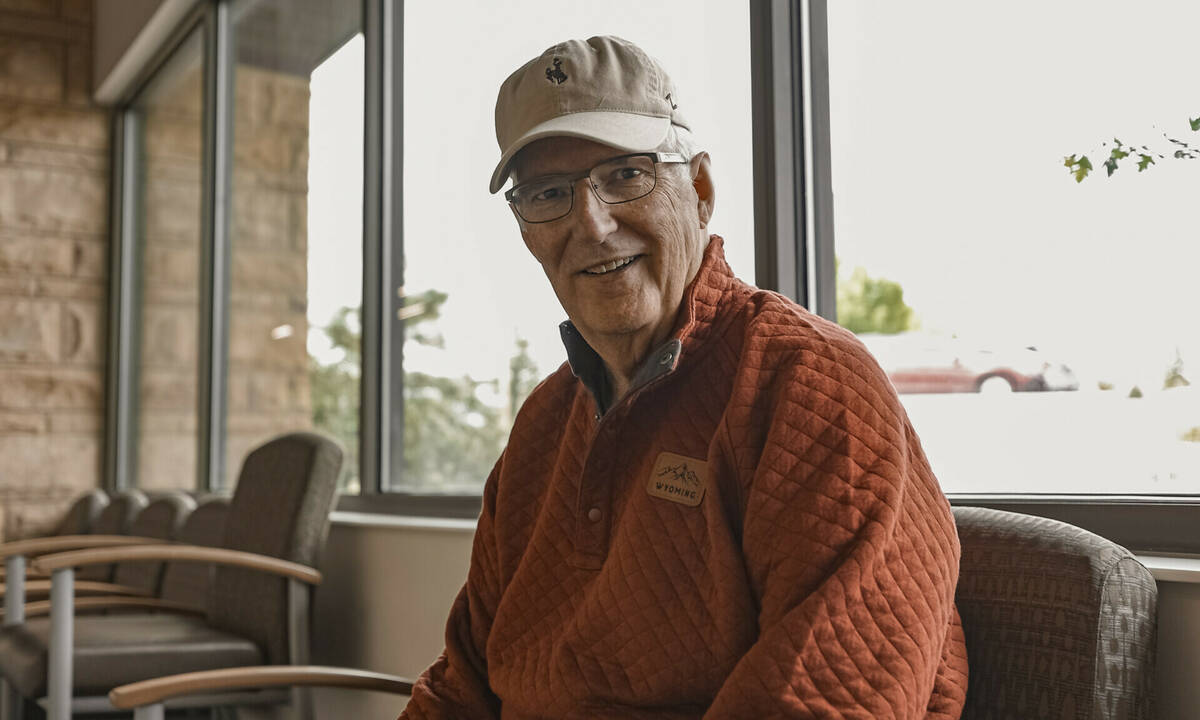
When he woke up for the second time on January 5, 2023, Mark Mader thought he had nodded off in the bed in Ivinson’s Emergency Department.
Lying flat, staring up at the ceiling, the looks on the faces of the crowd that had gathered in his room said otherwise. Little did he know, he had just been resuscitated. Mark had experienced a heart attack before his heart stopped.
Not Quite Right
Living in Laramie for the last 43 years, Mark had taken the drive from his house, located just south of town, to Ivinson Memorial Hospital on numerous occasions. He had gone for blood work, his back surgery, when Joan, his wife of 49 years, gave birth to their youngest child, and likely half a dozen emergency room visits. He didn’t know it yet, but this visit was going to be very different.
“I woke up about 4 o’clock in the morning and I hurt,” Mark recalled. “My shoulders, my chest, my back, I just hurt. And it was pretty good pain.”
Shrugging the aches and pains off as soreness, Mark got out of bed. He had been goose hunting in the days prior, and his body aches must be from climbing in and out of the pit, he told himself. The pools of sweat he was beginning to feel made him think twice about that assessment. Remembering his past two pulmonary embolisms, Mark knew this was no shoulder strain.
“I woke my wife up and I said, ‘Dear, I don’t feel good,” Mark remembered, agreeing to call an ambulance. “By the time I got my sweats on and my shoes on, I said, nah, we better go,” Mark said, deciding he did not have time to wait. “I just didn’t have a good feeling.”
Upon arriving to the emergency department, Mark was quickly taken to an exam room.
“They hooked me all up and said, “That’s a heart attack.” Mark remembered not feeling so well. Within fifteen minutes of his arrival, Mark’s heart stopped completely.
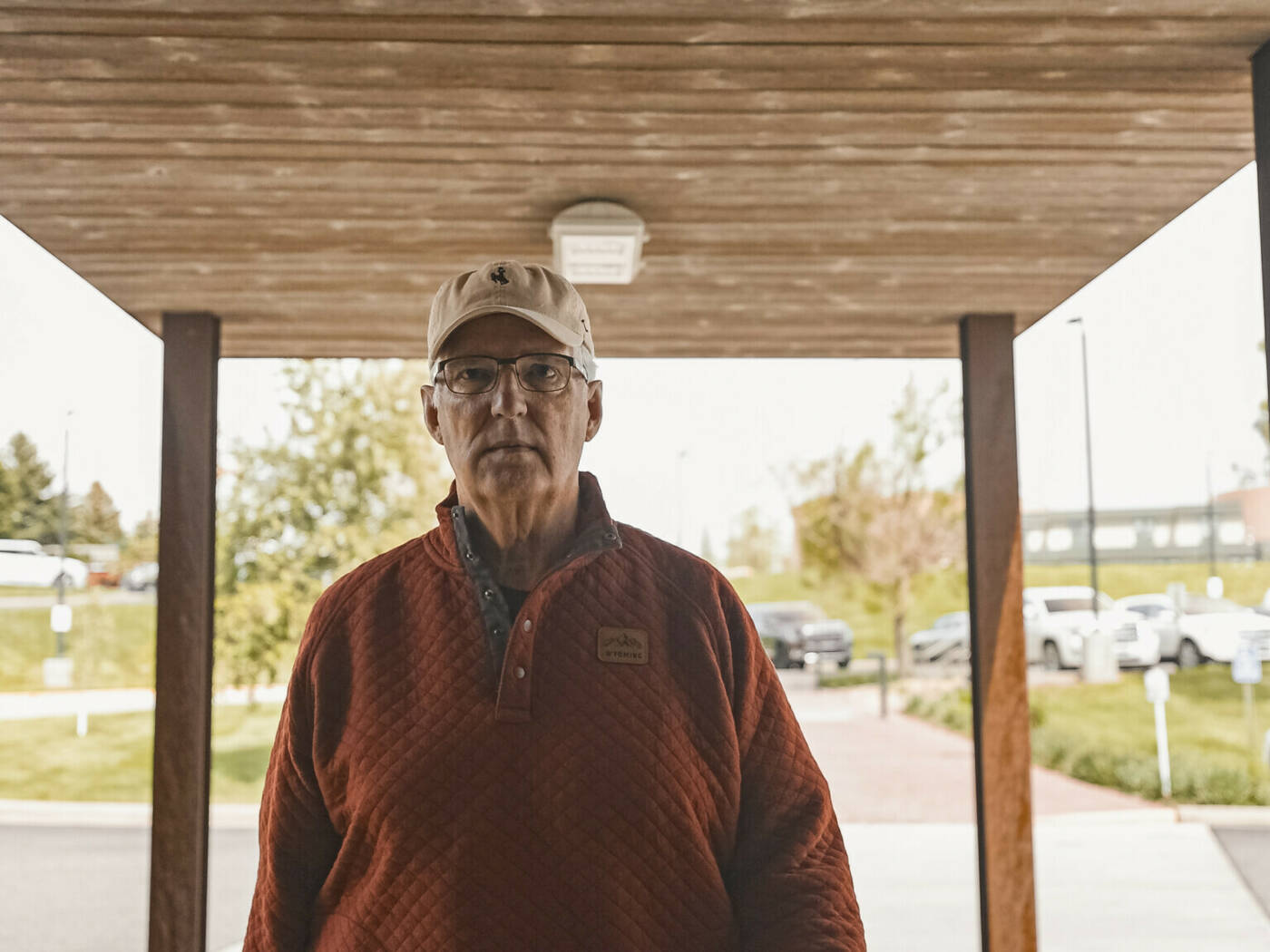
Prepped and Ready
It was a slow night in Ivinson’s Emergency Department. Emergency Physician Anna Schubert, MD was well-rested and ready for a new day when Mark arrived.
“It was about 5:30 am and he came in with chest pain,” Dr. Schubert recalled. “That is actually a known time that people tend to have heart attacks, (cardiac arrests) early in the morning.”
Immediately recognizing the signs, Dr. Schubert and the Emergency Department team left nothing to chance. Mark was roomed right away and hooked up to an EKG.
“With the heart monitor on, I could see that he was having a heart attack,” Dr. Schubert said. “We have a very smooth process for how we take care of patients that we identify as actively having a heart attack. The medical term for it is a STEMI.”
A code STEMI was called, which mobilized all Emergency Department resources, nursing resources, medications needed, monitors, as well as preparing to transfer to a facility with a cardiologist.
“A STEMI alert is related to somebody who’s having an acute coronary syndrome,” Emergency Department Director Erin Rumsey, RN explained.
“STEMI actually stands for ST-elevation Myocardial Infarction, and that’s where you have a clot in one of your arteries in your heart that is causing the muscle to die,” Erin added. “If not fixed quickly, can progress to cardiac arrest and death.”
Preparing to transfer Mark to Cheyenne Regional Medical Center, a hospital with specialized cardiology services, Dr. Schubert kept an eye on Mark’s heart monitor.
“I recall that I saw a couple of slightly abnormal heartbeats on the monitor,” Dr. Schubert said. “He went back to a normal heartbeat pretty quickly but I thought, ‘you know, we should be safe and get pads on just in case.”
Continuing to prep Mark with all the necessary precautions, Dr. Schubert continued to watch Mark’s vitals. Then she saw it happen.
“I saw his heart rhythm go into an abnormal beat called ventricular fibrillation,” Dr. Schubert said. “Ventricular fibrillation is what happens when the electrical wiring of the heart stops.”
Dr. Schubert and the Emergency Department team sprang into action. They had prepared for this. Beginning to administer CPR, with the pads securely attached, they brought him back.
“We got the heart monitor going and we charged it up and shocked him out of it,” Dr. Schubert said. “He woke up a couple of seconds later and he said, “Did I fall asleep?”
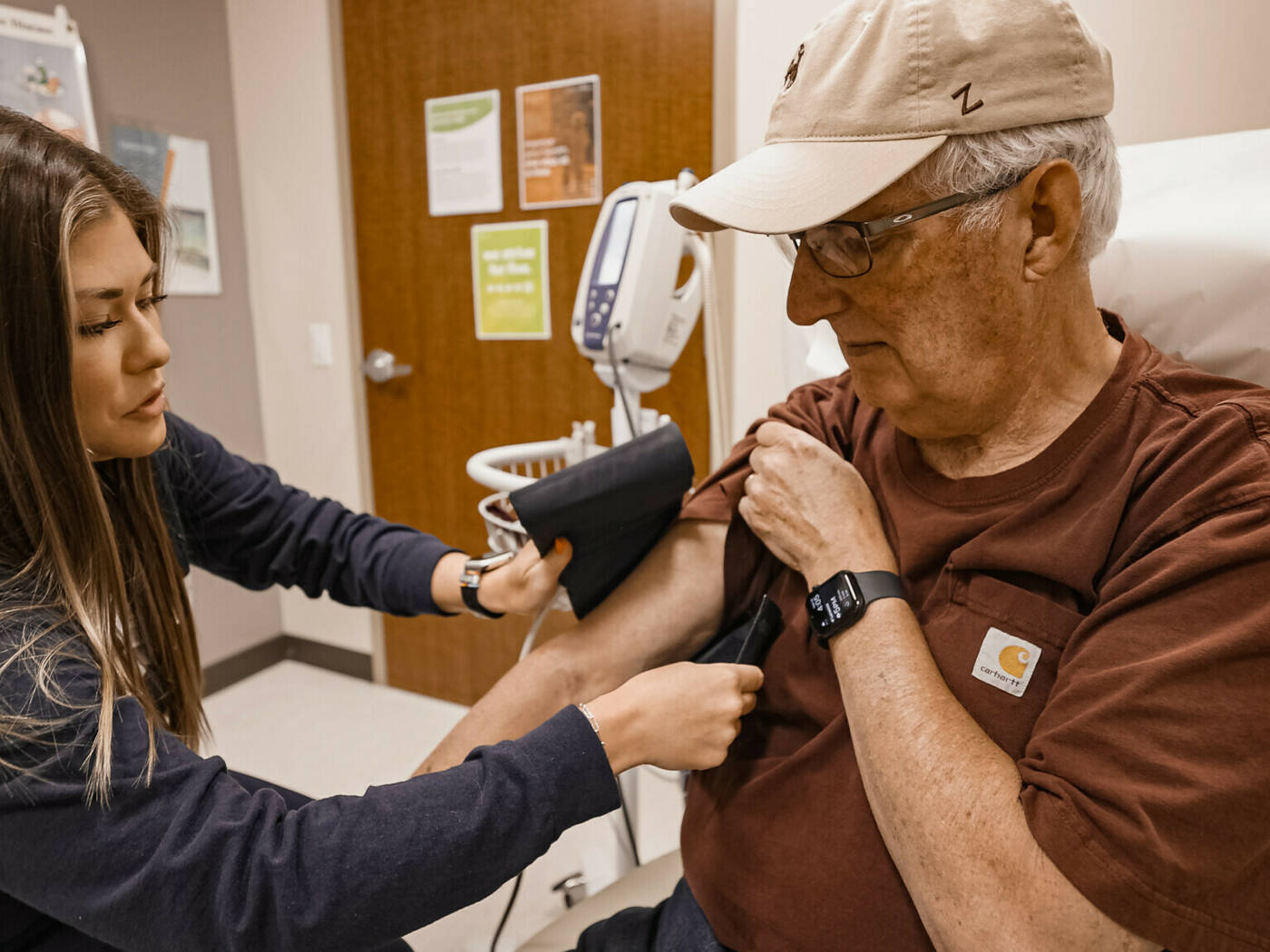
The Right Place at the Right Time
In the United States, someone has a heart attack every 40 seconds.
“I always tell people that have heart attacks in my ER that they had [theirs] in the right spot,” Erin Rumsey said. “If your heart stops, the thing that fixes it is electricity and fast CPR. We have all of the life-saving equipment to save somebody who goes into a sudden cardiac arrest. The only way out of that rhythm is to give them an electrical shock with our defibrillator.”
Mark Mader was certainly in the right spot.
“When my heart stopped, they were 100% ready,” Mark said. “The next thing I knew, I woke up and I was looking at the ceiling tiles and I thought this is different,” Mark recalled. “I knew something was seriously wrong.”
Mark’s transfer to Cheyenne was no longer an ambulance ride away. He was upgraded to first class, a helicopter ride that would land him right on top of Cheyenne’s Hospital.
A twelve-minute helicopter ride to Cheyenne, one surgery and two stents later, Mark would begin his road to recovery.
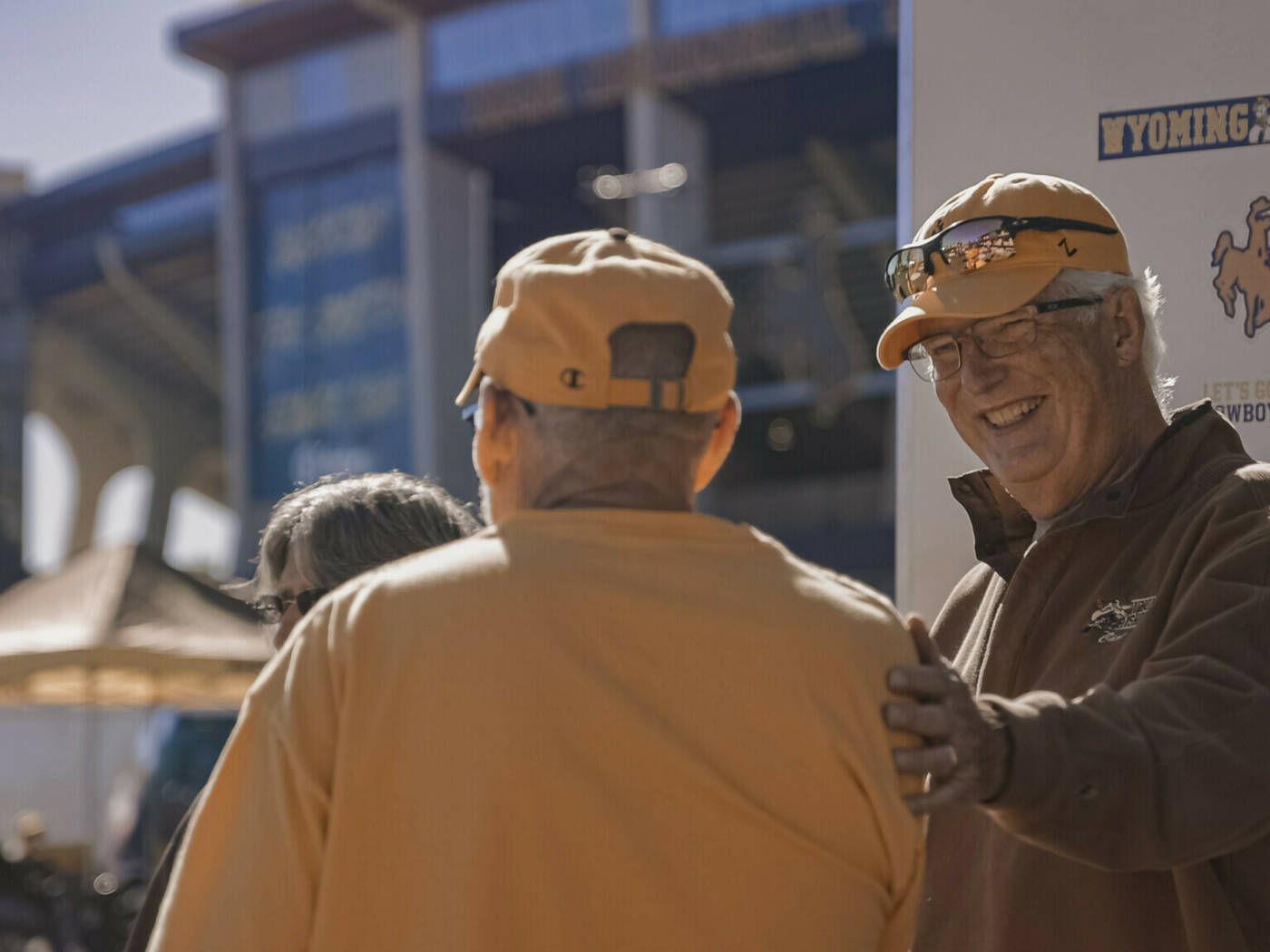
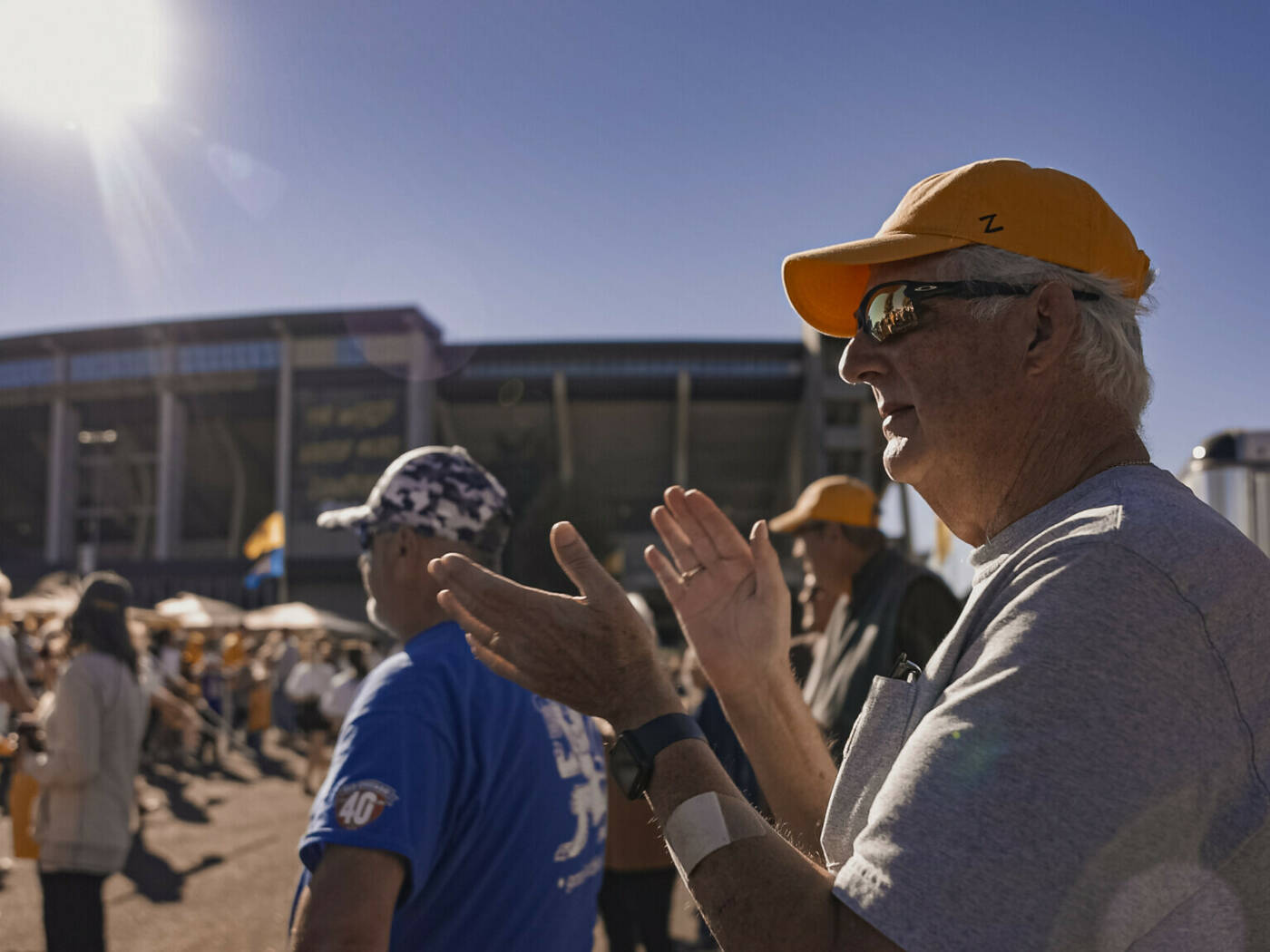
Hard Hits
As staunch supporters of UW Athletics, and University of Wyoming graduates themselves, Mark and Joan Mader strongly believe the saying: ‘Once a Cowboy, Always a Cowboy.’
Riding for the Brand is what made the couple fans of the Buffalo Bills football team — following the Bills drafting local Wyoming quarterback, Josh Allen.
A few days prior to Mark’s heart attack, on January 2, the Maders were cheering on the Bills during their Monday Night Football game in Week 17.
The Bills were playing the Cincinnati Bengals. It was the first quarter. The Bengals had the ball around the fifty-yard line and Bill’s defensive tackle, Damar Hamlin, made what appeared to be a routine tackle, taking a shoulder to the chest in the process. Hamlin stood up and fell backwards, passing out.
Hamlin was given CPR on the field and administered automated external defibrillation (AED). He remained motionless on the field for ten minutes before being removed via ambulance. Hamlin had experienced cardiac arrest.
Stunned by the horrific moment shown on national television, Mark now reflects on that event through a lens of familiarity. In both instances of cardiac arrest, CPR was administered immediately and defibrillation was used to shock the heart back to a normal rhythm. The quick action of medical personnel is why Mark, like Hamlin, is alive today.
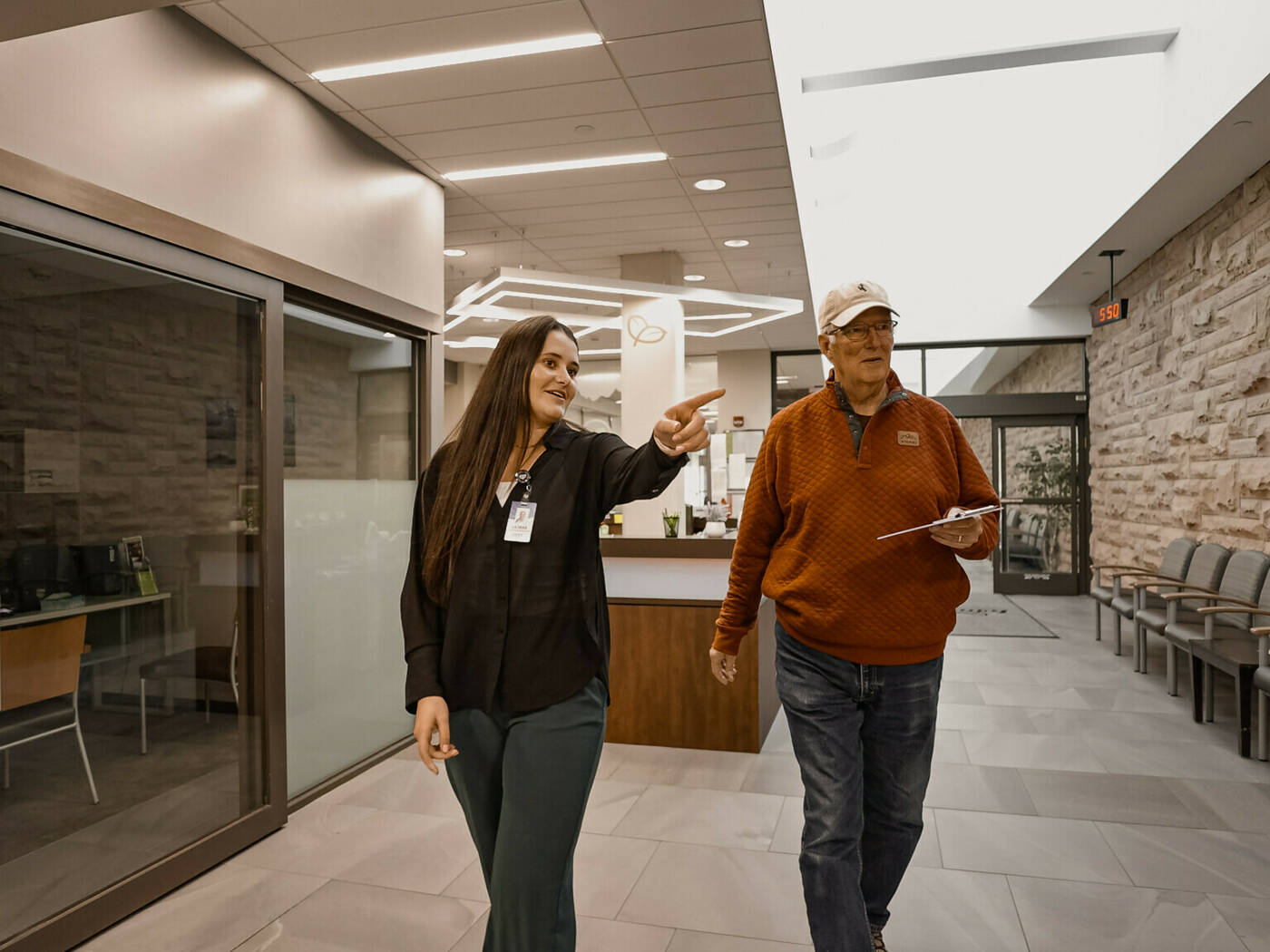
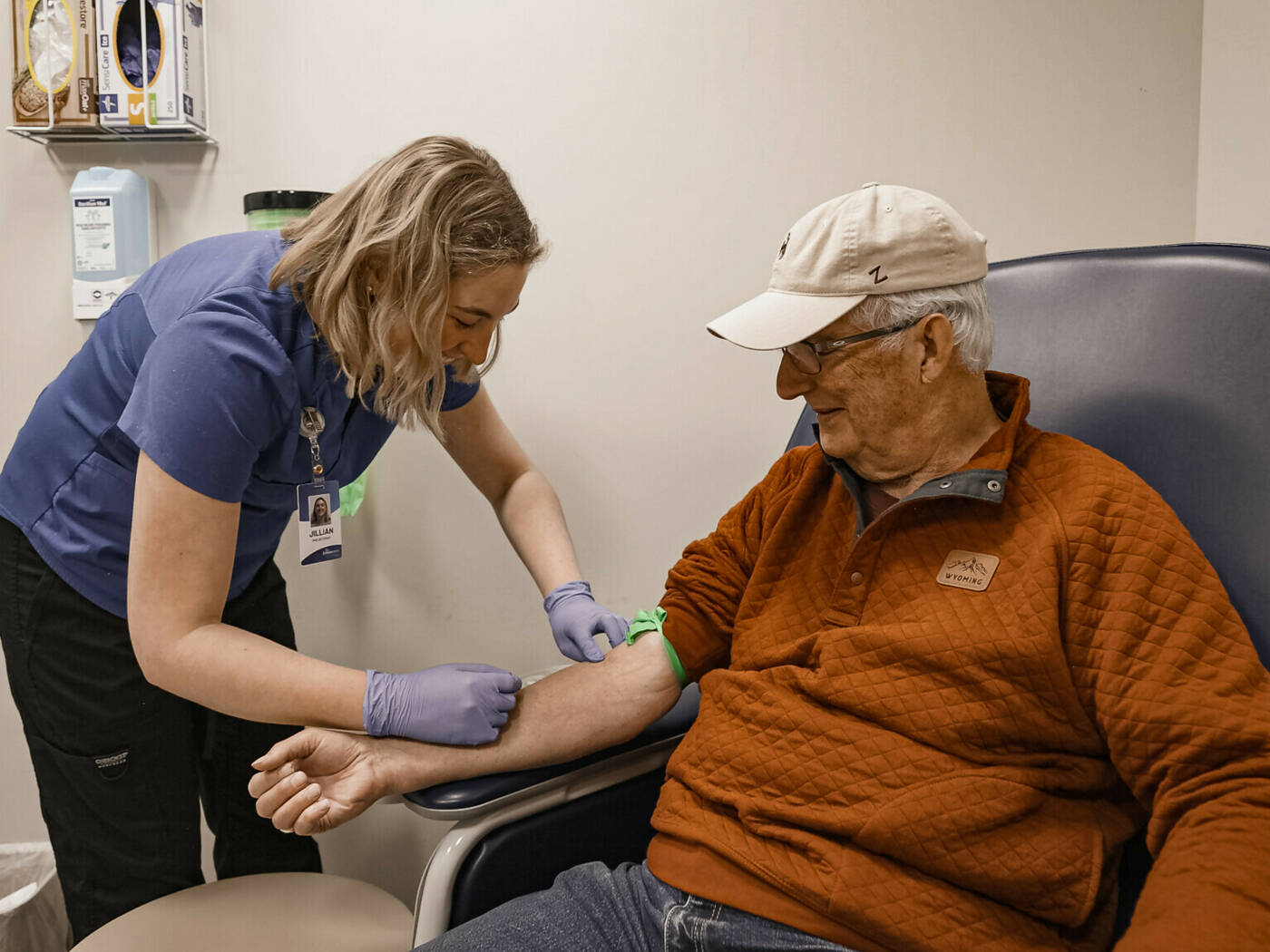
What to Watch For
As an Emergency Department physician, Dr. Schubert often see’s symptoms of cardiac events arriving in the unit. Both Dr. Schubert and Erin Rumsey stress the importance of seeking emergency care.
The symptoms of a heart attack can vary. The most common symptom is often chest pain, but some people can have less typical symptoms. Other symptoms may include: back pain, stomach pain, nausea, sweating and dizziness. A general sense of doom has also been identified as a common occurrence.1
“There are many cases that we see like that where somebody would have died if they had not come in when they did to seek medical care,” Dr. Schubert explains. “If you take Mark’s case, for example, his heart stopped and we had to shock his heart back [to] functioning. If he had stayed home, and he had not been in an emergency department, he very likely would not have survived. It was a life-saving moment for him, life-changing for his family.”
According to the CDC, every year, about 805,000 people in the United States have a heart attack. Nearly half of all deaths linked to a heart attack are caused by cardiac arrest, accounting for 300,000 to 450,000 deaths in the United States each year.2
“I wasn’t on the list to have a heart attack,” Mark said after his recovery. “I had to see my doctor a week later. And he just said, ‘you weren’t a candidate.’
Mark, despite his two pulmonary embolisms, was a healthy, active man. He didn’t smoke. He retired from a career that he loved and was enjoying life. Then life stopped for him.
“The doctor and her staff were really ready. As soon as I went in, my heart stopped. They jumped into action and brought me back to life,” Mark said. “I appreciate how organized they were. I appreciate it more now after what I’ve been through, because you don’t realize what they’re doing until after you’ve been through it.”
Following his heart attack, Mark began working with Ivinson’s Cardiac Rehabilitation team. Through a 12-week program, Mark, with the help of cardiac team members Dusty and Maddi, focused on his heart health more than ever.
“I’m 100%,” Mark said proudly, following his clean bill of health from his cardiologist. “My heart is 100%. And I’ve got to give a lot of that credit to the cardiac rehab here. It is outstanding.”
After Mark returned home, he penned a letter to Ivinson’s Emergency Department staff, to thank them for saving his life.
Upon receiving it, the team hung it up in their break area — a reminder of why they do what they do.
“Anytime I get a personal note about one of my nurses or techs or doctors, it makes you feel like you’re doing this for a purpose,” Erin said. “I think we have a really unique job in the ER, where we can really see somebody come in the worst shape of their life and save it.”
Breann May is Ivinson's special projects coordinator, working on a wide range projects from internal engagement and recognition programs, to actively taking part in community health needs. Breann began her career at Ivinson in 2015 as an office specialist at Ivinson Medical Group and later joined the Ivinson Marketing team, before making the jump to administration. Earning her Bachelor of Arts degree in Journalism from the University of Wyoming, Breann enjoys talking to patients and employees alike and having the opprotunity to tell their stories.